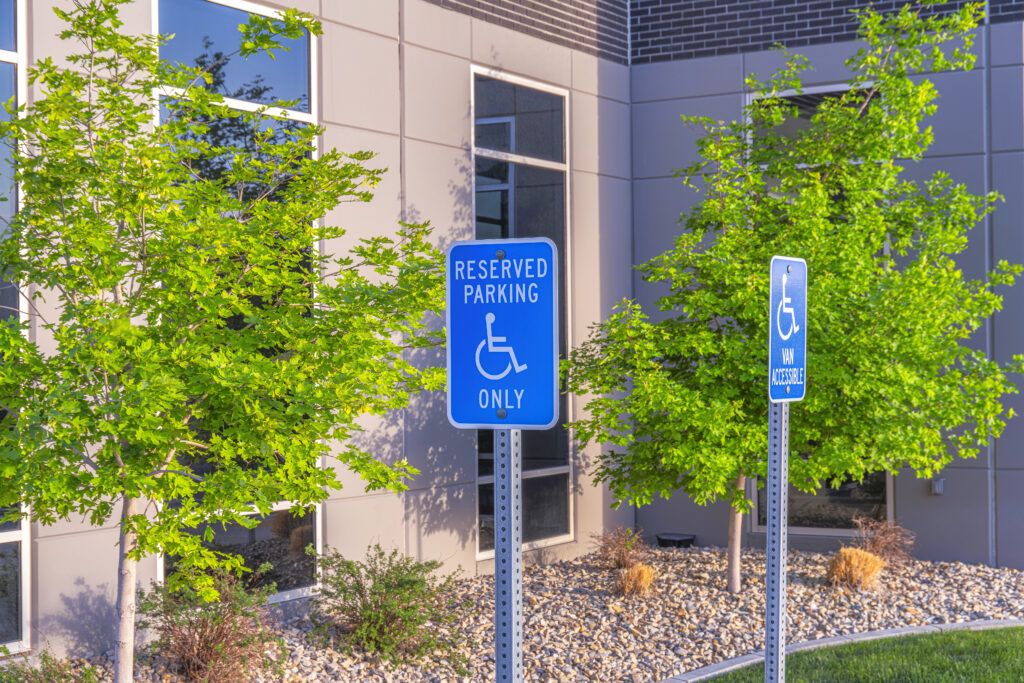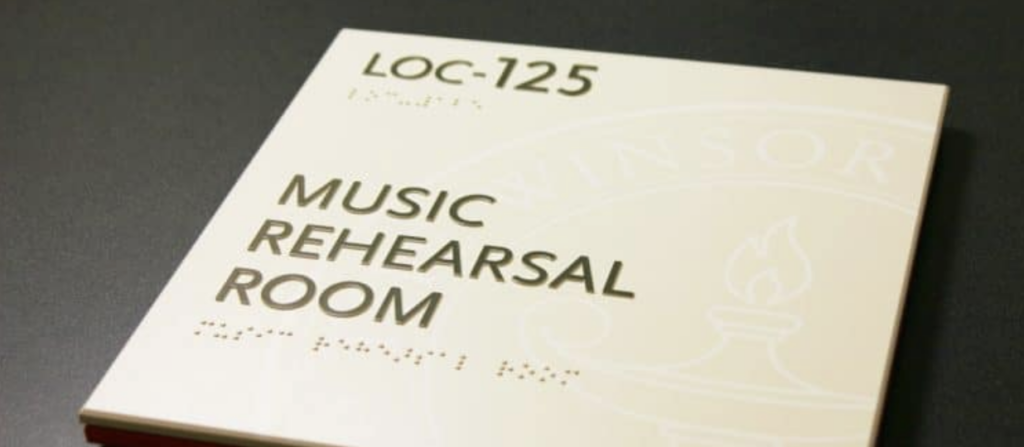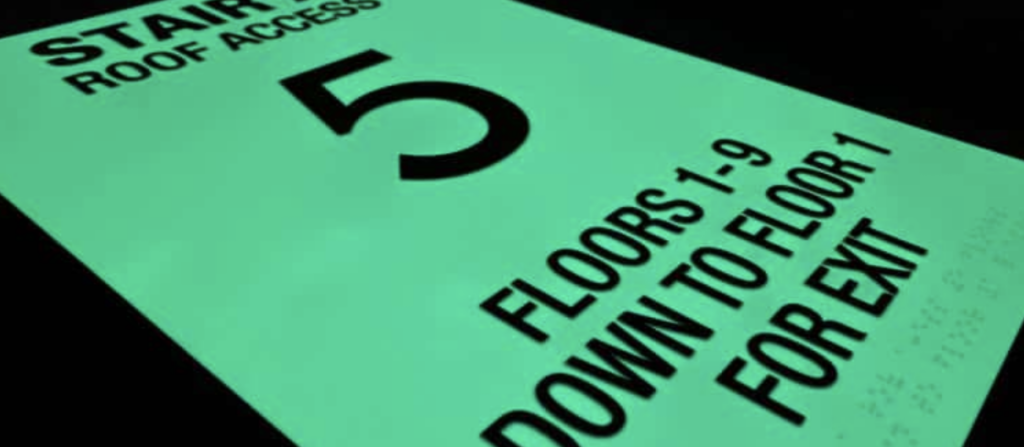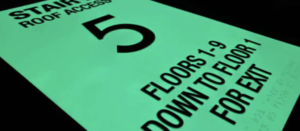For architects, fabricators, and property managers working with Nova Polymers, understanding the nuances of ADA parking sign requirements is crucial for creating inclusive and compliant spaces. This guide will explore key considerations for designing effective ADA parking signs, ensuring both legal compliance and optimal visibility.
The Importance of ADA Parking Signs
ADA parking signs play a vital role in creating accessible environments for individuals with disabilities. These signs not only designate reserved parking spaces but also communicate essential information about accessibility features. Properly designed and placed ADA parking signs contribute to a more inclusive society by ensuring that those who need accessible parking can easily identify and use designated spaces.
Key Requirements for ADA Parking Signs
When designing ADA parking signs, several critical factors must be considered to ensure compliance and effectiveness:
Size and Placement
ADA parking signs should be large enough to be easily visible from a distance. The standard size for these signs is typically 12 inches by 18 inches or larger. The placement of ADA parking signs is equally important. They should be mounted at the head of the parking space or in an adjacent access aisle, with the bottom edge of the sign at least five feet above the ground. This height ensures visibility for both pedestrians and drivers.
Color and Contrast
High contrast is essential for ADA parking signs to be easily readable. The most common and compliant color scheme is a white symbol on a blue background. This combination provides excellent visibility and is widely recognized as the standard for accessible parking signage.
Symbol and Text
The International Symbol of Accessibility (ISA) must be prominently displayed on ADA parking signs. Additionally, any text on the sign should be in a color that contrasts with the background, ensuring legibility. For van-accessible spaces, additional text identifying the space as “van accessible” is required.
Durability and Materials
Given that ADA parking signs are exposed to various weather conditions, using high-quality, durable materials is crucial. Nova Polymers offers innovative solutions, including photopolymer substrates, that provide both durability and compliance for ADA signage needs.
Best Practices for ADA Parking Sign Design
To create effective and compliant ADA parking signs, consider the following best practices:
1. Prioritize Clarity and Simplicity
When designing ADA parking signs, focus on clarity and simplicity. Use easily recognizable symbols, high-contrast colors, and legible fonts. Avoid cluttering the sign with unnecessary information that could detract from its primary message.
2. Ensure Proper Illumination
In areas with low light conditions, consider using reflective materials or providing additional lighting for ADA parking signs. This ensures that the signs remain visible and effective at all times of day and night.
3. Integrate with Overall Wayfinding System
ADA parking signs should be part of a cohesive wayfinding system within your facility. Ensure that the design of these signs complements other directional and informational signage while still maintaining their distinct and recognizable appearance.
4. Regular Maintenance and Inspection
Implement a schedule for regular inspection and maintenance of ADA parking signs. This helps ensure that signs remain in good condition, legible, and compliant with current regulations.
Compliance Considerations for ADA Parking Signs
Staying compliant with ADA regulations is crucial for avoiding legal issues and creating truly accessible spaces. Here are some key compliance considerations:
Understanding Local Regulations
While federal ADA guidelines provide a baseline, many states and municipalities have additional or more stringent requirements for accessible parking signage. For example, some areas may require specific language or additional information on ADA parking signs. It’s essential to research and comply with local regulations in addition to federal standards.
Proper Allocation of Accessible Spaces
The number of required accessible parking spaces depends on the total number of parking spaces in your facility. For instance, a lot with 401-500 spaces needs at least nine accessible parking spaces, including two van-accessible spaces5. Ensure that your signage accurately reflects the correct number and type of accessible spaces.
Van-Accessible Signage
Van-accessible spaces require additional signage identifying them as such. These spaces must have a wider access aisle (typically 8 feet) to accommodate wheelchair lifts.
Innovative Solutions from Nova Polymers
As a leader in the field, Nova Polymers offers cutting-edge solutions for creating compliant and durable ADA parking signs:
Photopolymer Technology
Nova Polymers’ photopolymer substrates provide an excellent option for creating ADA parking signs that are both durable and precisely compliant with regulations. These materials allow for the creation of signs with crisp, clear text and symbols that maintain their integrity over time.
Customization Options
While maintaining compliance, Nova Polymers offers customization options that allow signs to be tailored to specific brand guidelines or architectural aesthetics. This ensures that ADA parking signs can be both functional and visually integrated with their surroundings.
Sustainability Considerations
As the industry moves towards more environmentally friendly practices, Nova Polymers is at the forefront of developing sustainable materials for ADA signage production. This allows clients to meet both accessibility and environmental goals.

ADA Parking Sign Compliance
Designing effective ADA parking signs requires a careful balance of compliance, visibility, and durability. By following these guidelines and leveraging innovative solutions from Nova Polymers, architects, fabricators, and property managers can create accessible parking areas that are both legally compliant and user-friendly. As we continue to strive for more inclusive environments, the role of well-designed ADA parking signs becomes increasingly important. By prioritizing clarity, visibility, and compliance in your signage design, you contribute to a more accessible world for all.
Remember, ADA parking signs are more than just a legal requirement – they’re a crucial component of creating truly inclusive spaces. With the right approach and materials, you can ensure that your ADA parking signs not only meet regulatory standards but also effectively serve those who rely on accessible parking.




